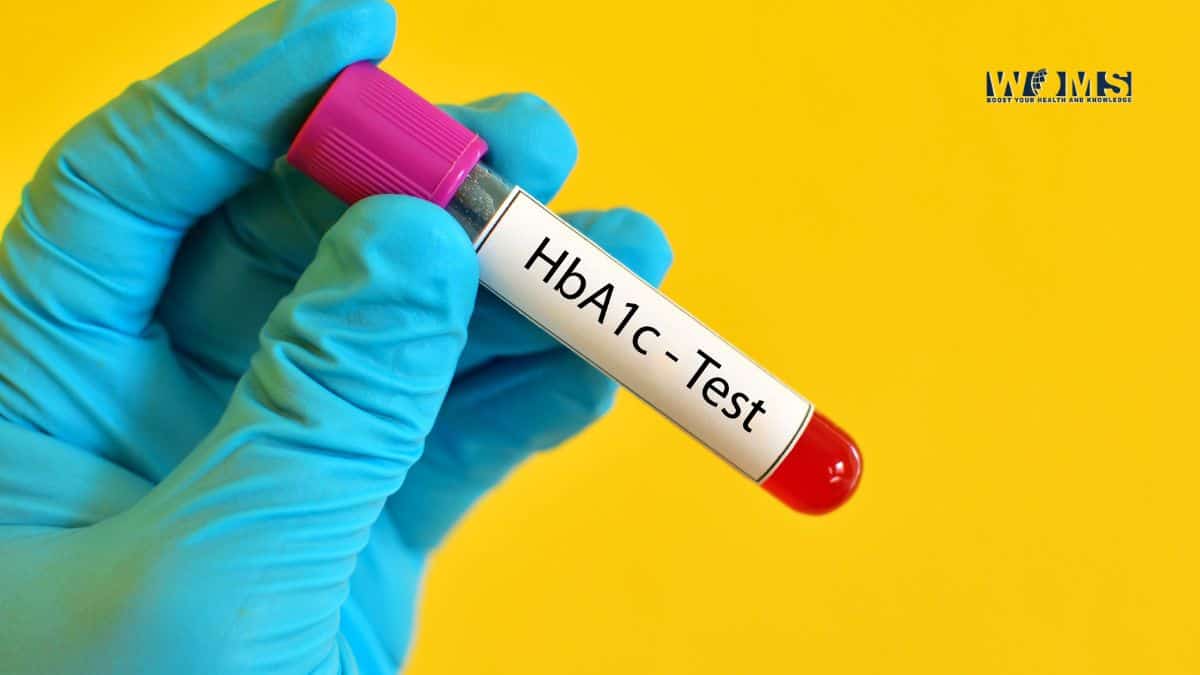What Is HbA1C? Why Do I Need to Do It?

The HbA1C test (hemoglobin A1C test) is utilized to measure the glucose amount or blood sugar amount that is linked with hemoglobin; the part of the red blood cells that actually help transmit oxygen from the lungs to various parts of the body. This test is also known as the hemoglobin A1C test or A1C test. It is not utilized for identifying gestational diabetes (a type of diabetes that is seen in pregnant women) or for identifying diabetes in kids.
How is this test different from other blood tests?
The majority of glucose tests will typically measure the glucose amount present in the human body. The HbA1C blood test is quite different from a normal finger-prick blood test. The quick blood test offers an idea of the levels of blood sugar present on that given particular day and time, typically, at the instant when the test is done. But, the HbA1C test is a bit more specialized in that it will measure the glycated hemoglobin levels as well. This helps offer information regarding the average blood sugar level amount for a period of around 3 months.
Who must take this test?
The doctor might suggest you take this test once every 90 to 180 days, depending on the general health and risk factors that you may pose. If you are someone who has been diagnosed already with prediabetes or type 2 diabetes, the doctor will recommend you to take this test to frequently monitor the levels and calculate your risk of various other health complications relating to long-term diabetes. If you plan to have a kid, the medical practitioner might suggest this test just as a precautionary health check-up. If your medications have changed in recent times, your doctor might want to notice if and how they affect your blood sugar levels.
The test is typically performed to diagnose diabetes or to check the health of people who have already been diagnosed with prediabetes or those who are at a bigger risk of acquiring type 2 diabetes.
You may want to take this particular for the following reasons too.
- You have a history of heart conditions
- You are obese or overweight
- You possess hypertension or high blood pressure
- You live a sedentary lifestyle
How is this test done?
Glycated hemoglobin is formed when the glucose in the body attaches to the red blood cells. The human body is not capable of utilizing the glucose properly and this often causes glucose accumulation in the blood, which is revealed in the reading. The healthcare team will draw a blood sample and collect it in a vial, just like any other blood test.
Are there special preparations that require being followed?
Whilst the HbA1C blood test is just like a normal blood test, you can talk to your medical practitioner to learn if you require doing anything the previous day or in the hours that lead up to your test.
Can someone take this test if they are pregnant?
If you have plans to get pregnant, your medical practitioner will suggest you take the HbA1C test every month to help check your blood glucose levels. Upholding the levels will help reduce or avoid the risk of congenital malformations in your baby. Your doctor will ensure that the levels are around 6.1% or even lower throughout the first trimester. When you reach the 2nd and 3rd trimesters, the doctor might not utilize this test anymore for checking the blood glucose levels. The objective is to keep the levels as nearly as possible to the required range. If you feel like the levels are a bit high, you can talk to your pregnancy care and health care team.
The test results
The typical range is often below 5.7%
Prediabetes – 5.7% to 6.4%
Diabetes mellitus – 6.5% or higher
For people with diabetes, the perfect HbA1C levels should be around 6.5% or lower.
If you are someone who is in danger of acquiring type 2 diabetes your target level should be around 6%. Having a higher count indicates that your blood has too much sugar.
Does this test have side effects?
There are no established side effects of this test. You might however experience a slight stinging sensation or light pain or bruising at the site where the lab technician inserted the needle.
Benefits of bringing down HbA1C
The HbA1C test results are a relatively accurate depiction of the overall health of a person and what is to be expected in the near future. Even if you possess a slightly higher reading, it may put you at a bigger risk of acquiring various health risks.
If you possess either type 1 or type 2 diabetes and if you manage to improve the results of the HbA1C test by just 1%, it can reduce your risk of developing complications like diabetic nephropathy, neuropathy and retinopathy by approximately 25%. It will cut down your risk of acquiring cataracts, heart failure and the risk of amputations as well.
Reducing your HbA1C levels
A mixture of regular exercise, a healthy diet, and changes in the medication can usually assist in reaching your required HbA1C levels and upholding the same. However, you need to keep in mind that the readings can differ for various people in various situations, and so you need to talk to the healthcare team and come up with a plan that bests suit your current state of affairs.
You can make use of a clinically proven and comprehensive diabetes management program as well. This helps you individualize diabetes management rather than pursuing a generic plan. It also helps tackle various factors that may affect your blood sugar levels like stress and sleep. Not just this, as a sudden diagnosis or boost in HbA1c, can often cause diabetes distress, having a committed team of qualified professionals at your side to guide you every step of your way can be beneficial and comforting as well.
Also Check: A1C Calculator




